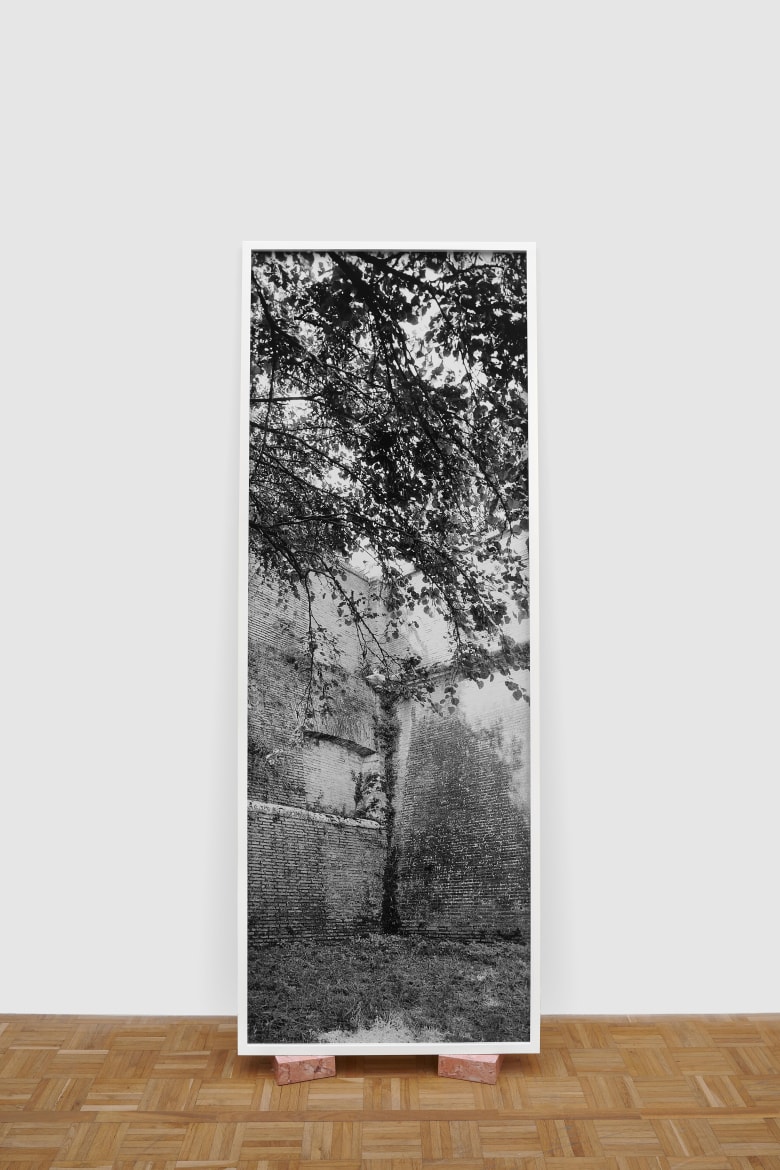 Untitled #1 (Walls)
Untitled #1 (Walls)
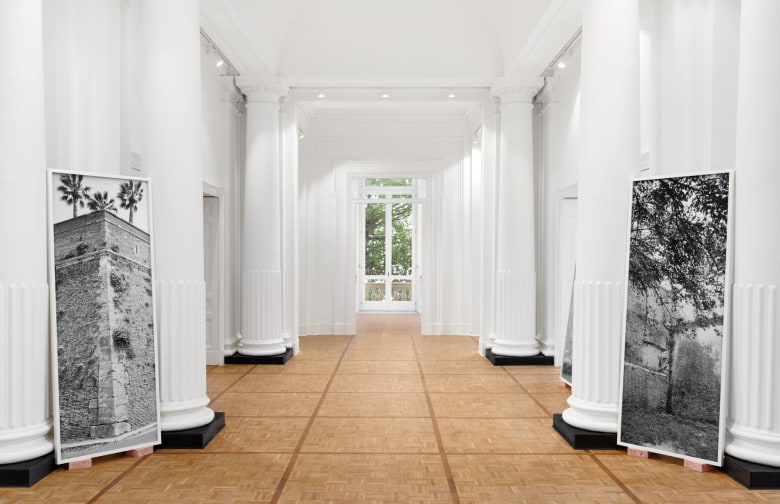
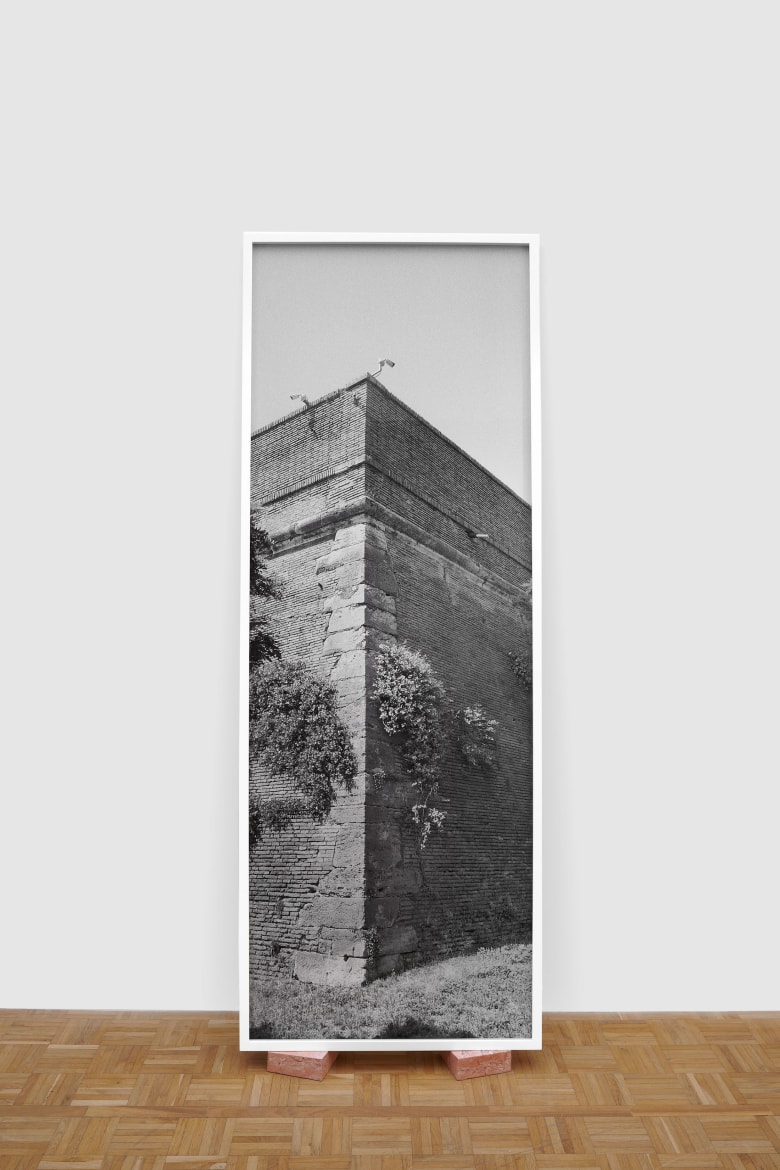 Untitled #2 (Walls)
Untitled #2 (Walls)
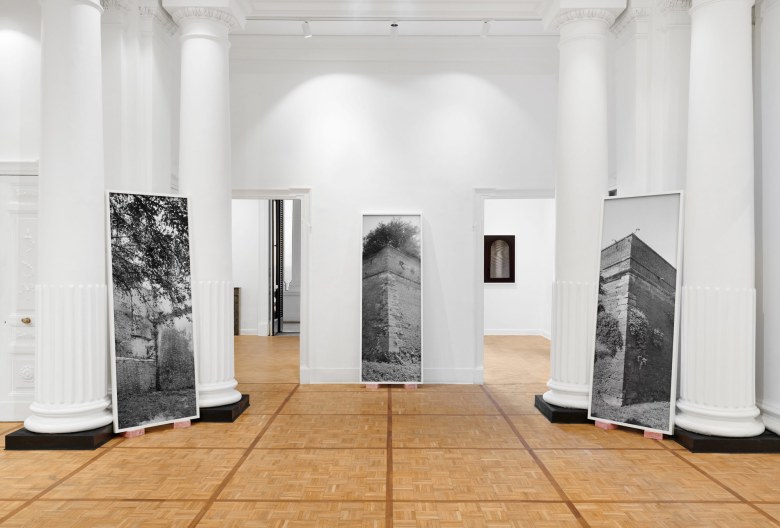
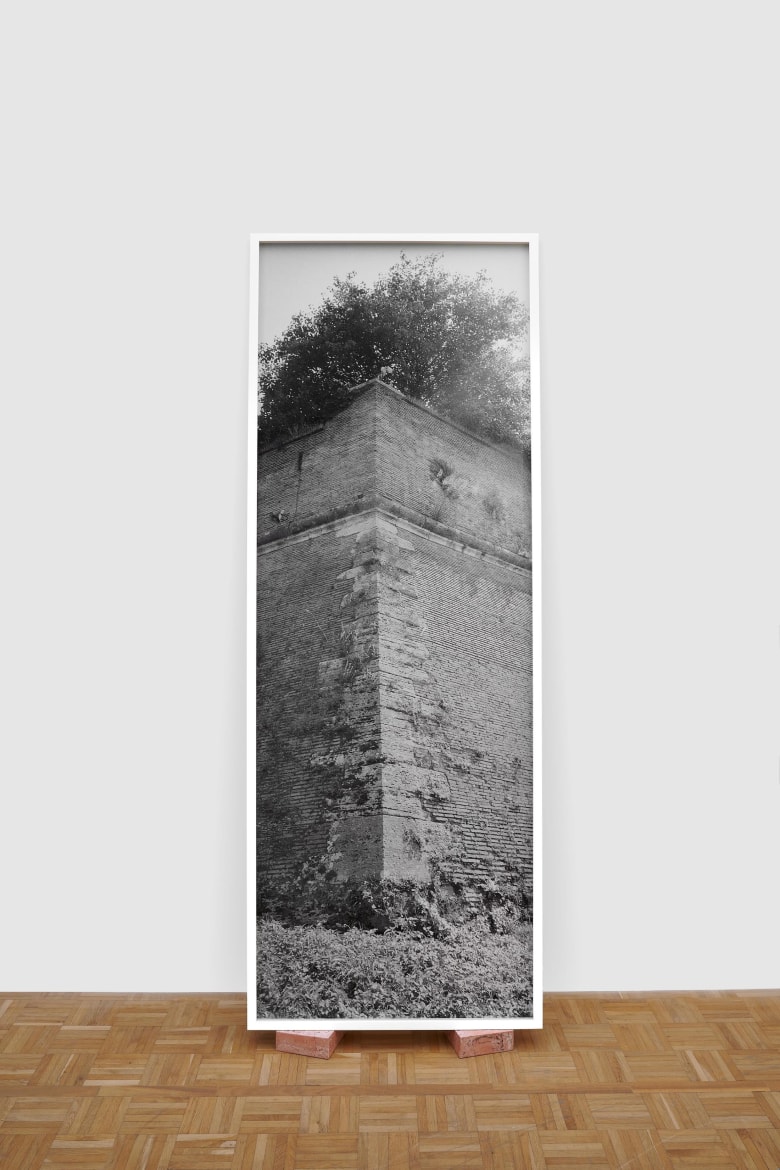 Untitled #6 (Walls)
Untitled #6 (Walls)
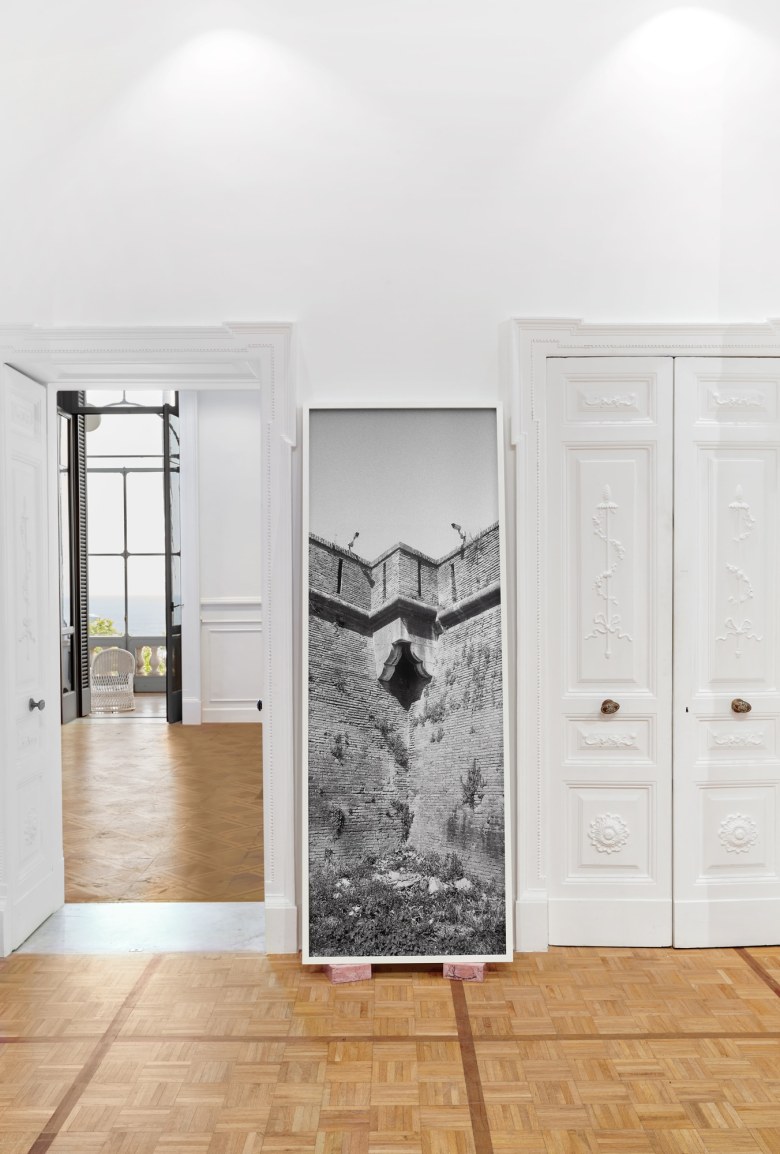
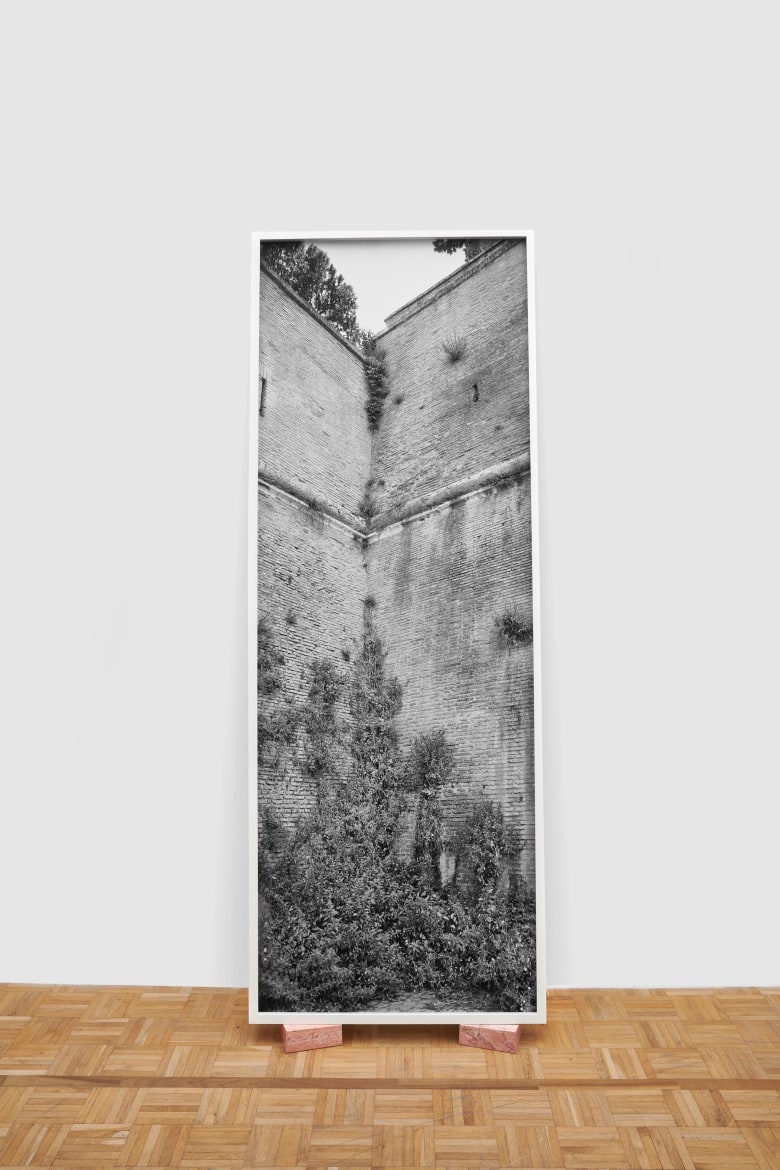 Untitled #11 (Walls)
Untitled #11 (Walls)
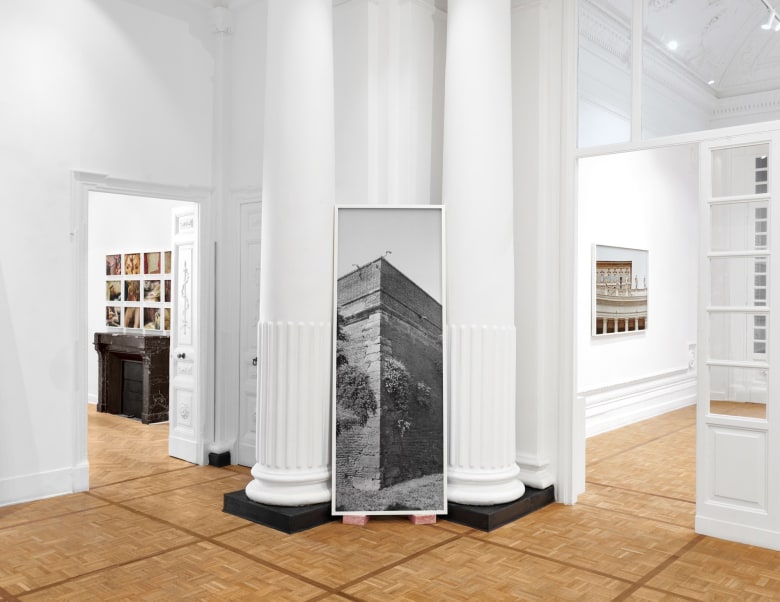
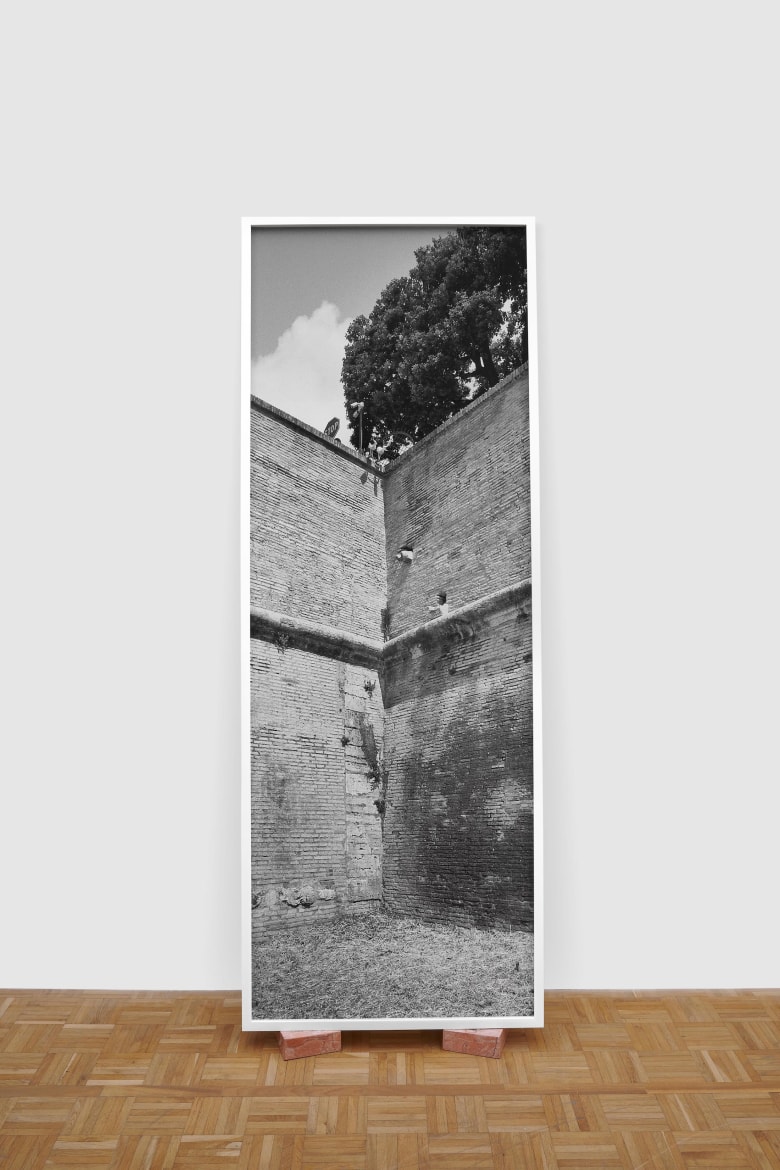 Untitled #9 (Walls)
Untitled #9 (Walls)
Catherine Opie
Untitled (Walls), 2023pigment print, marble plinths
pigment print, marble plinths
221 x 79.8 x 37 cm.
87 x 31 1/2 x 14 1/2 in.
87 x 31 1/2 x 14 1/2 in.
Conceived as part of the body of work Walls, Windows and Blood, made during Opie's American Academy at Rome residency, the Walls exist as both photographs and sculpture at once. Each work sits upon a pair of pink-red low marble pedestals designed by American Academy Architecture Fellow Katy Barkan, and hand crafted by artisans in Naples. Opie documented the entire wall system around the Vatican City with her camera turned portrait orientation, focusing on each corner, either pointing in or out from the Vatican City. Like the artists of the New Topographics, such as Bernd and Hilla Becher, Opie creates a systematic taxonomy of a site, to make richly textured black and white prints on fine art rag paper which revel in the artifact and materiality of the walls and the printing medium itself. These architectural corners are echoed in the design of the marble plinths, whose own architectural properties switch orientation in dialogue with the subject. The plinths are both a nod to the rich grandeur of Rome and the Vatican City, and reminiscent of an art ‘block’ used to temporarily lean an artwork during installation. Here they intentionally de-stabilise, creating a sense of vulnerability and precariousness. Where Opie has asked us previously in 2020 to question what a monument is and our relationship to history, and how society preserves, supports and maintains systems of power through these sites and symbols, here she asks us to question the power symbolised by these architectural structures, and perhaps suggests their foundations might not be as stable as they present.
